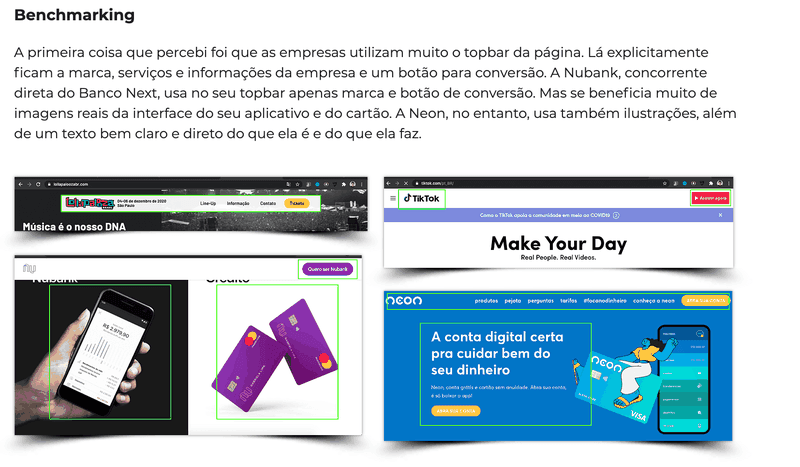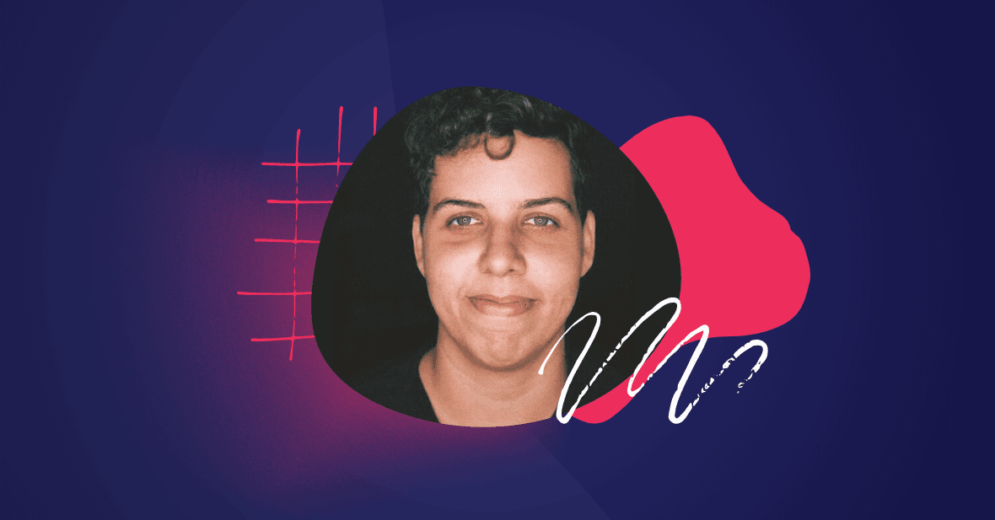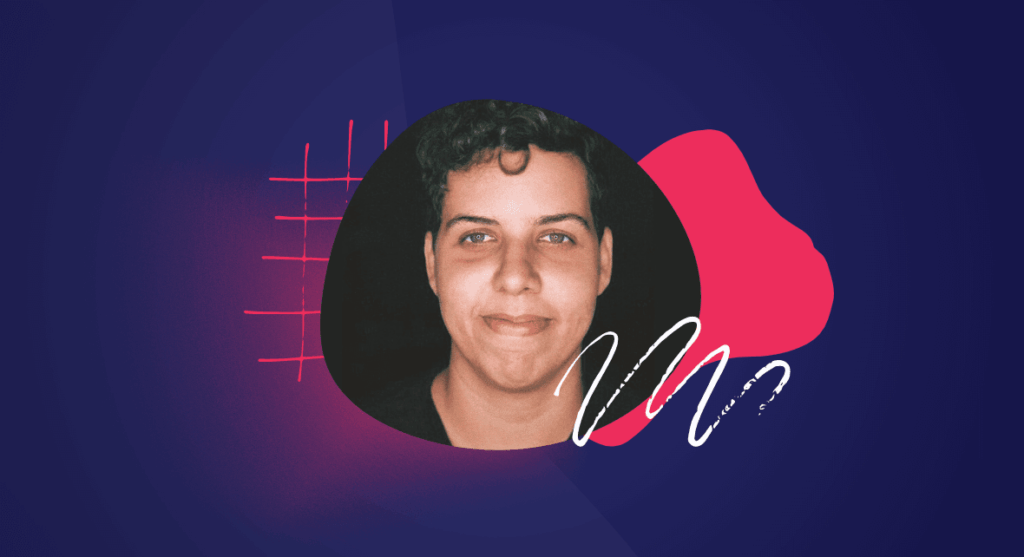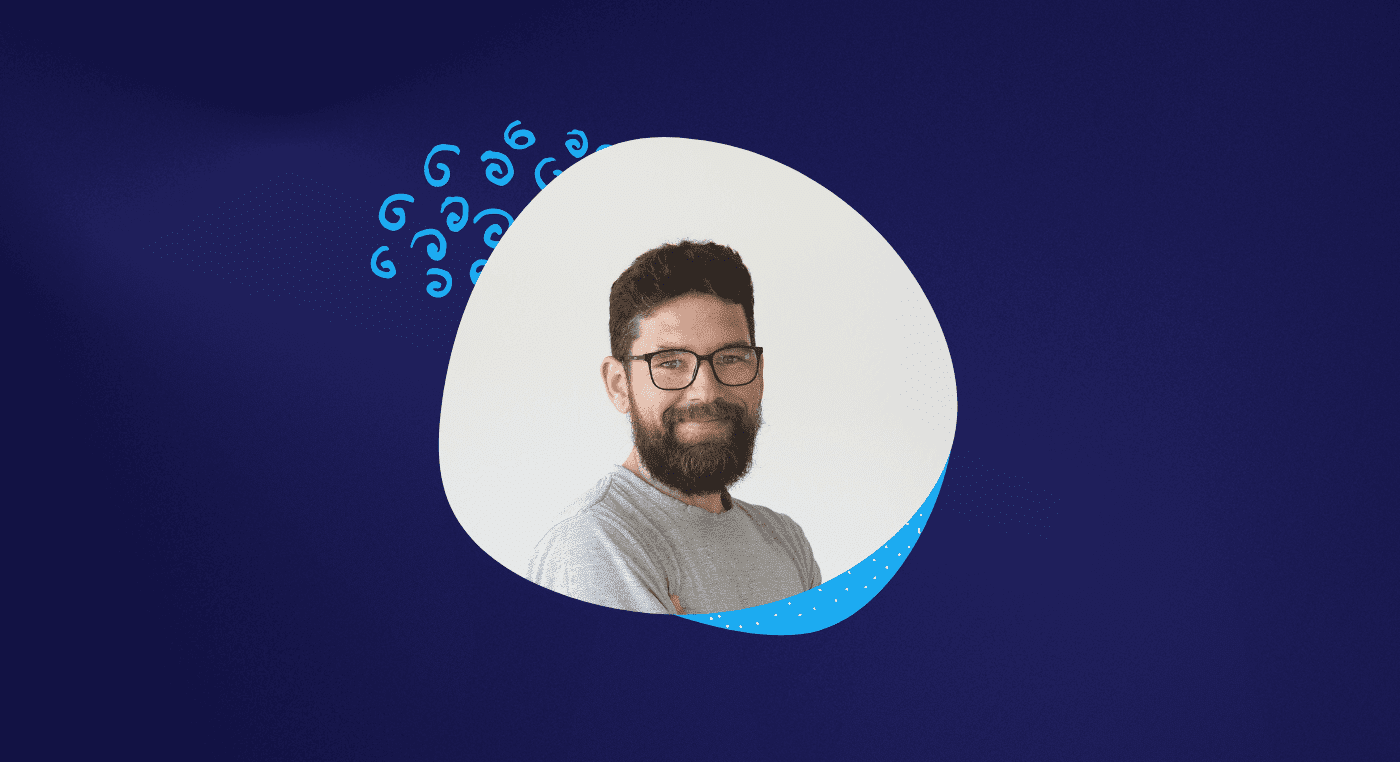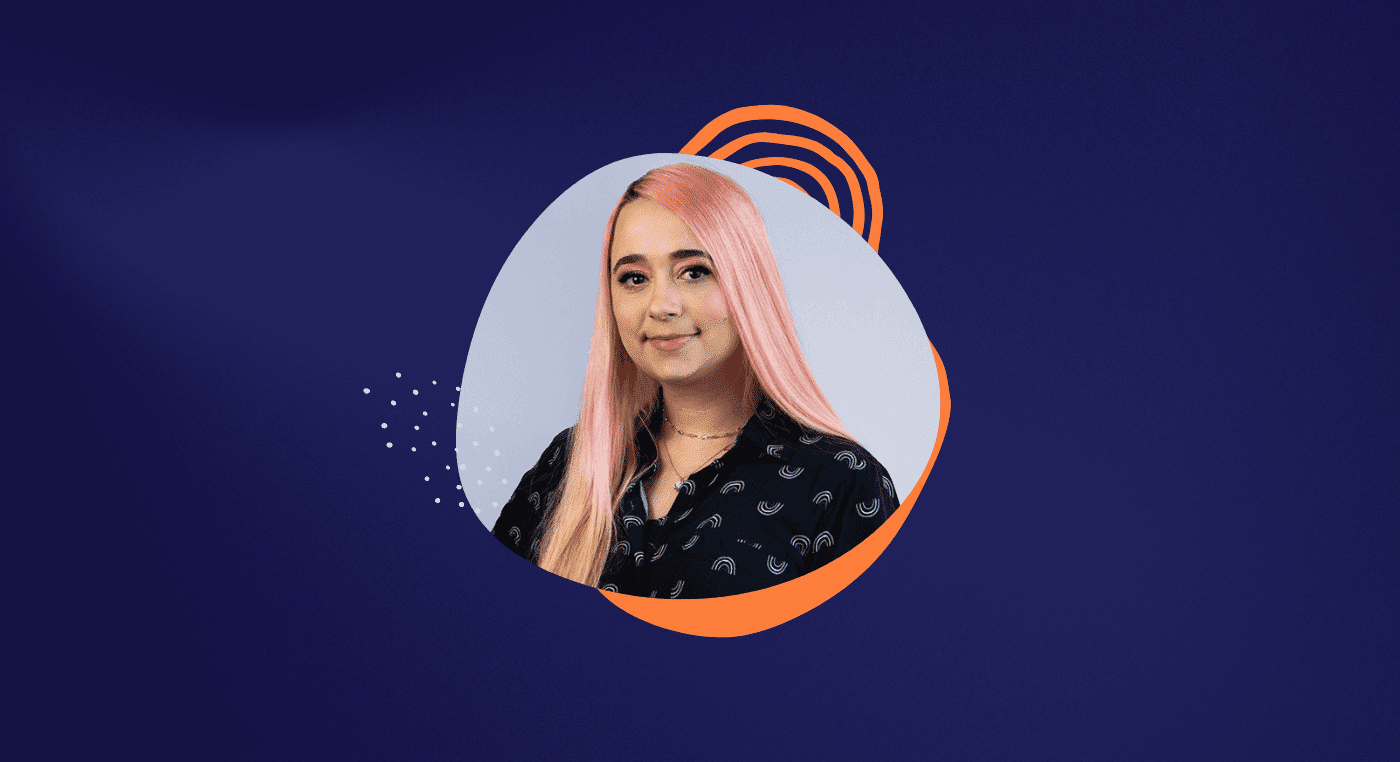Iana is a Mastering Interface Design (MID) student who earned a degree in advertising. She shares her journey of transitioning to UX design, admitting that she initially thought user experience was limited to screen design.
Over time, she discovered that UX encompasses much more than that and ended up falling in love with the field.
Iana also shares tips on how she stayed motivated during demotivating moments in her studies and job search. Today, she works remotely as a Product Designer for a company based in São Paulo.
In the beginning, she confesses that she thought user experience involved only screen design, but with time, she understood that UX was much more than that and ended up falling in love with the field.
Check out her inspiring journey and other tips.
Iana, thank you for your time! To start, tell us a bit about yourself.
Firstly, thank you so much for inviting me! I feel very honored to be here because I've always enjoyed these interviews with the students.
I'm Iana, 25 years old, and graduated in advertising. I worked on offline campaigns and also with digital marketing.
At the beginning of the pandemic, the company I worked for adopted the remote model, and with that, I saw the opportunity to learn more about UX Design, to understand the paths I could take in the area.
What initially attracted you to UX Design?
I actually find it funny because when I started hearing about user experience and researching courses and articles on Google, I had in my head that UX was only related to screen design.
That way, I always thought there wasn't much secret to the field, and since I came from art direction, I thought UX was very similar to what I had been doing up until that point. I even thought that switching to the field would be very easy.
But when I talked to a friend who was already working with UX, I realized I was totally wrong. She opened my eyes by saying that the vision I had about the area didn't match reality.
With the help of this friend, I began to understand a little more about what UX was and what was under that umbrella.
Reading Tip: 11 Mistakes to Avoid When Looking for a Job in UX Design
What caught your attention about UX Design?
Initially, I saw that UX has a lot of growth potential. And I wanted to expand my horizons career-wise.
I realized that UX opportunities were not just limited to my country; there were a lot of international positions to work remotely.
Another aspect that caught my attention in the field was the salaries. And as I learned more about UX, I became more and more drawn to it.
I realized that UX is an area that has actual processes. Unlike what I was used to, where a brief would come up, I would do the work, present it to the client, and it was done.
In UX, there are several steps to go through to develop a project, there's a whole process. Everything is interconnected, and I realized that this is the type of model that attracts me and with which I feel comfortable and confident working with.
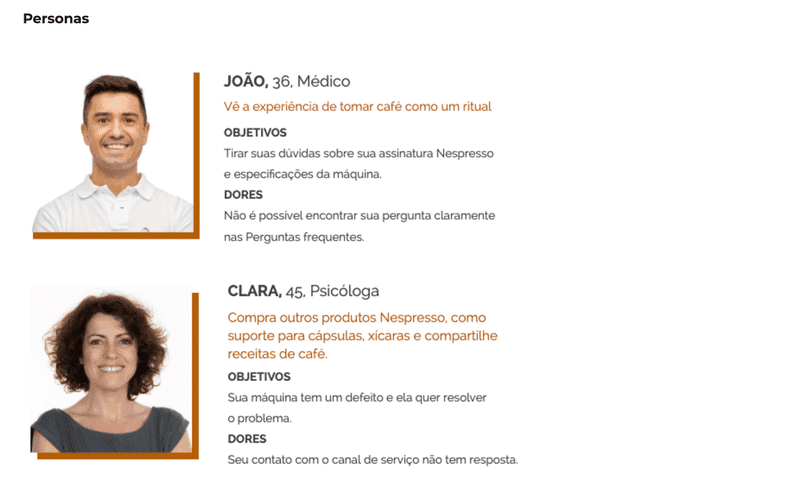
How did you manage to stay focused during this complicated time?
That's a great question! When the pandemic hit, and we switched to the remote model, I found myself with a few extra hours in the day. Around 2 to 3 hours, to be exact.
This time, which I used to spend commuting, became an opportunity for me to study. So I planned my time really well. I hung a study schedule on my wall and looked at it every day.
From Monday to Friday, I worked normally, and in the evenings, I was able to study for 2 to 3 hours. I didn't want to study until midnight, for example, because I wanted to have some time for myself as well.
During the study periods, I managed to keep up with the classes from the Mastering Interface Design (MID) program.
On Saturdays, I usually studied more lightly, so I would read a book on UX, for example. That was the plan sticked to during that period.
Reading Tip: Student Testimonials: What Do They Say About The MID program?
You were very consistent. What helped you stay motivated?
We usually start excited. I was always researching different things to study and diving in headfirst. Sometimes I tried to take a break to catch my breath!
But over time, you lose your rhythm and slow down. When I realized I was going slower and feeling unmotivated – even because of negative results from job applications – I tried to connect with people.
In that sense, I always tried to watch interviews with students and talk to people who had already transitioned to UX. The Aela student community also helped me a lot to maintain motivation and enthusiasm.
Additionally, I would go on LinkedIn and try to establish contact with people, both to network and to share and listen to stories and experiences.
All this helped me regain the drive and motivation to study and keep up with my routine!
Solutions – What you should keep in mind at this stage is that a support page is a frustrating page, unlike the rest of the website, which, as an e-commerce, creates expectations. So, based on what Nespresso is, how can I offer a page with more quality and user experience? – Iana Joaquina, Nespresso study case.
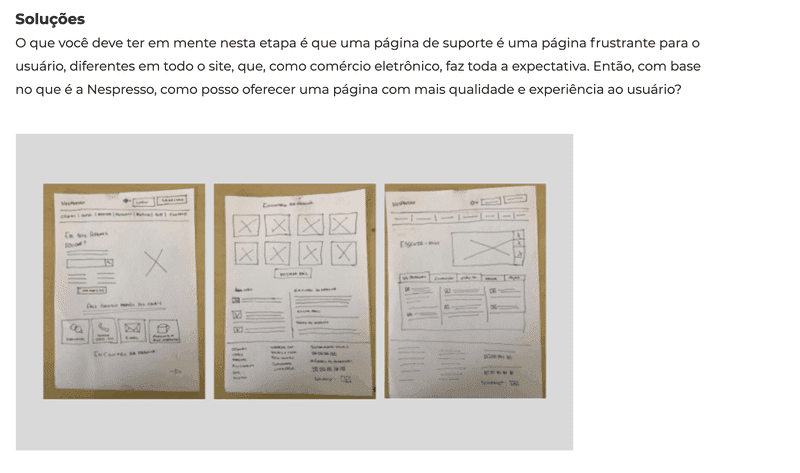
Great advice! You mentioned job openings and rejections. How was your process of searching for opportunities?
I think I was very anxious when I started applying for UX positions. I was still in level 1 of the MID and I believe I didn't have enough maturity to participate in the selection processes.
However, this was essential to understand which points I could improve.
At the same time, I felt that participating in processes was interfering a little with my study routine because there were interviews and often a challenge to complete, which required more time.
I received many rejections, which left me frustrated, but also helped me understand which points I needed to improve.
In some processes, I asked the recruiter for feedback, asking where I could improve.
Some of the feedback was really related to my experience. So, I didn't get selected for certain positions because the company was looking for more experienced professionals.
Other recruiters pointed out specific issues that I could improve, such as my English, for example. With that, I was able to improve little by little with the feedback and conversations with companies and recruiters.
Another important thing I found was to keep in mind that I didn't want to take the first opportunity that came my way.
I even went through a process before this job opening, but it wasn't exactly what I was looking for in terms of career and type of company, so I ended up declining.
What I used to do was investigate the company, if it was a place where I would feel comfortable and that was aligned with my goals. That's how I searched for job openings and participated in the processes.
Congratulations on your patience during the whole process! As you advanced in the MID, what would you say contributed to your selection processes?
There were two important factors for that. The first was understanding how to present myself in interviews. As time went by, I felt much more confident in saying what I was looking for and everything else.
The second point was increasing my knowledge about UX processes, and that was only possible by advancing with the MID studies.
When I was at level 2, I learned more about UX Design processes and had more clarity about how Design Thinking worked, for example.
This was very important for the selection processes because recruiters realized that I understood processes and not just about the development itself.
Having this vision was very important, and these were the two points that I worked on until I could pass the selection process of the company I am currently in.
Reading Tip: How to leverage my background and transition into UX Design
You mentioned that you thought UX was similar to art direction at first. And now, after a while, what differences do you find in these two areas?
Certainly, the big difference is in the processes.
The kickoff phase with the client to understand and balance their goals with the user's goals is very important.
This understanding is different from advertising, and even the day-to-day routine is quite different.
As an art director, I spent all day working alone, and now I don't.
Now I participate in various meetings with the user, the client, or someone on the team. This routine of interactions with people has changed a lot from my previous profession.
CSD Matrix – From all the information collected with desk research, I organized it in a CSD Matrix to be clearer about which assumptions and doubts I can validate and discover in an interview with users – Iana Joaquina, case study.

How is working remotely going for you?
I quite enjoy working remotely! I'm actually a big advocate for this model!
In fact, it was precisely remote work that helped me achieve my career expansion goals.
I live in Salvador but work for a consulting firm in São Paulo, which also has people from all over.
Remote work has allowed me to have this flexibility; I can be close to my family and work from anywhere.
Productivity and delivery are not impacted; we continue to meet our goals, which is why I greatly support remote work!
What has been your biggest challenge now that you work in UX?
I believe the biggest challenge is communication. Before, I thought it would be something related to using different tools, but we actually learn that more quickly.
Communication presents a unique challenge in the field of UX design as it involves navigating complex dynamics, finding a balance, and engaging with clients, developers, users, and all stakeholders. It requires understanding their perspectives and crafting effective solutions.
Establishing efficient communication stands out as the most significant challenge of all. Working remotely adds an extra layer of complexity, as the convenience of approaching someone's desk for a quick conversation is no longer available. Instead, we rely heavily on scheduling multiple meetings to bridge the communication gap.
While tools and processes can be learned over time, developing the soft skills of effective communication, such as speaking, pitching, and presenting ideas, is actually the greatest challenge.
This skill requires continuous improvement to ensure successful collaboration in the realm of UX design.
Finally, what has been your biggest learning experience so far?
It may seem cliché because I know some people have already said this here, but my biggest learning experience has been patience.
We talked about design processes, and I believe this applies to our own process. It’s important to understand our own process; we can't skip steps.
We need to respect the time of each step before moving on to the next one.
If we respect this, there's no mistake!
Benchmarking – The first thing I realized was that companies use the topbar of the page a lot. There they explicitly put the brand, services and company information, and a conversion button. Nubank, a direct competitor of Next, uses in its top bar only the brand and the conversion button. But it benefits a lot from real images of its application and card interface. Neon, however, also uses illustrations, as well as a very clear and direct text of what it is and what it does – Iana Joaquina, case study developed during the MID
